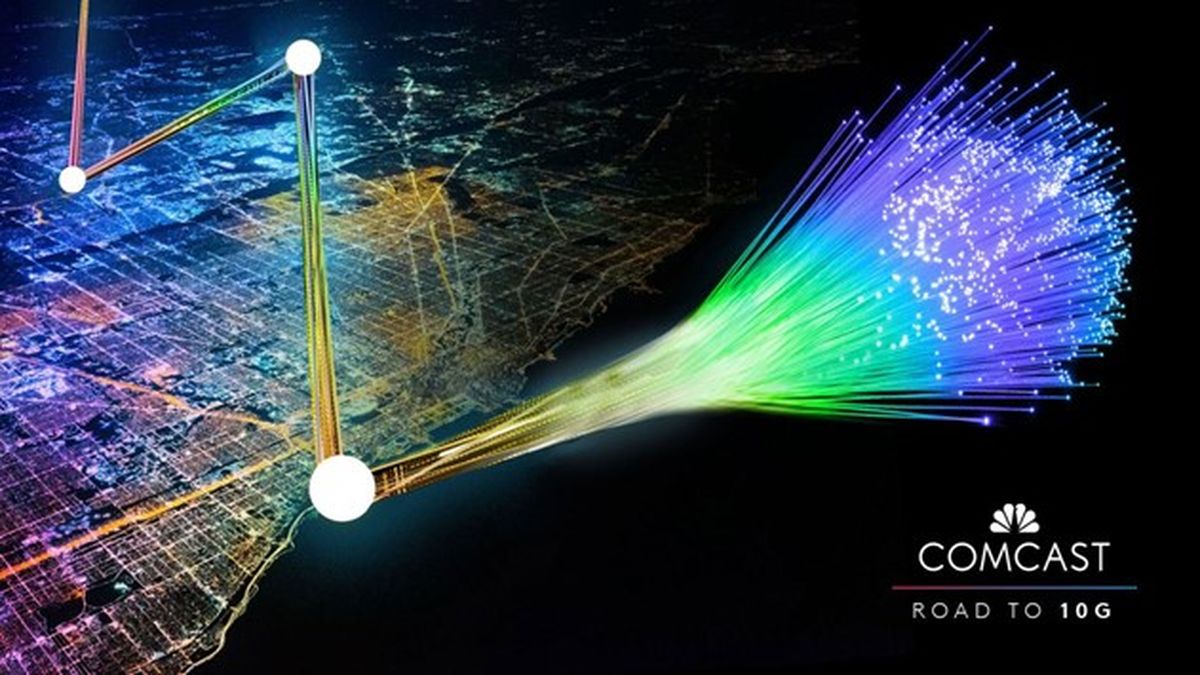Traveling the “The Road to 10G” in the Pacific Northwest

I was a young guy fresh out of the Marine Corps when I took a job in my wife’s hometown of Atlanta as an installer with a cable company that soon became part of Comcast. It was 1999, and America’s life-changing appetite for faster and faster internet speeds was just taking off.
Consumers were discarding their original dial-up internet connections (delivered over creaky conventional phone lines) for much faster digital broadband connections. Along with the rest of the world, I was learning that faster broadband speeds were the gateway to more and better online services. Fast forward more than 20 years, and network innovation continues to blaze a path for faster speeds and greater access to connectivity, and today, our Pacific Northwest is seeing the benefits.
Over the last five years, Comcast has invested $20 billion to evolve and expand our network, and as part of this ongoing investment, we are introducing fiber-rich network improvements here that will offer Oregon and Washington customers internet speeds 10 times faster than the fastest they have now. And that offer will extend all over the state, on both sides of the Cascades, in every community, Zip Code, and neighborhood served by the Xfinity network.
This massive expansion project will be largely invisible to the public because one major advantage of our Hybrid-Fiber Coaxial (HFC) network architecture is that we can quickly and continuously evolve our customers’ connections with minimal disruption. Our approach is the smartest, most efficient way to deliver true next-generation speeds to the greatest number of people in the shortest amount of time because we don’t need to dig up entire neighborhoods and millions of yards in the Pacific Northwest.
And because of our long-standing commitment to digital inclusion, Comcast will deliver these updates throughout our entire network over the course of the rollout — not just certain markets, and neighborhoods. As we conduct this work, we will go market-by-market to serve everyone in our Pacific Northwest Region footprint, just as we’ve done with previous network improvements.
This will all happen in stages over the next several years. We’re packing a record amount of technical expansion into a relatively short time. The action has already started, and the end goal is to offer every Xfinity customer in Oregon and Washington multigigabit symmetrical speeds over the connections already installed in their homes. So, if you haven’t already, you’ll be hearing a lot of talk about Gigabits per second, also referenced as Gbps.
A one Gbps connection moves content at the speed of one gigabit per second, the equivalent of 1,000 megabits per second (Mbps). To put that into perspective, the first “high-speed” home broadband system I installed back in 1999 had a speed of 1.5 megabits per second. And that was enough to earn bragging rights for the fastest internet connection in the neighborhood.
Across our footprint in the Pacific Northwest, we now offer ultra-fast speeds up to 1.2 Gbps to all Xfinity customers. The speeds we offer today provide more than enough capacity to handle the internet needs of almost any household in America. From downloading movies to high-speed web browsing, interactive schoolwork, videoconferencing, or posting on social media, even if everyone in the family is online at the same time.
So why are we making an ultra-fast network even faster? It’s because we don’t build our network to meet our customer needs today, we build it anticipating a future of ever-increasing demand, and new, exciting services that can make use of faster speeds and greater capacity.
This sort of future-proofing made us ready to handle the surprise of the COVID pandemic. The massive and sudden shift to remote work and schooling created unprecedented demand for online connections. We had a few rough spots, but our network was resilient enough to handle the demand.
Looking five to ten years into the future, we are confident that our approach and road to 10G or 10 gigabit-per-second speeds will continue to pay off. The proliferation of internet-connected devices in our homes and cars will push the need for speed, both upload and download.
So, in the first phase stage of this expansion, we’re offering a maximum download speed of two Gbps, combined with blistering fast upload speeds up to 200 Mbps… five to 10 times faster than our existing upload speeds. We expect 40 percent of our network in the Pacific Northwest to offer multi-gig internet speeds by the end of the year.
As we progress to the next phase of our 10G work, we’ll start delivering multigigabit upload and download speeds over those same standard coaxial connections installed in millions of homes in Oregon and Washington.
Of course, not everyone will need anything close to a super-fast 10G connection. People will move into the internet future at their own pace. When they do arrive, though, we want our network to be ready and waiting for them.
Roy G. Novosel is Vice President of Engineering at Comcast Pacific Northwest Region.